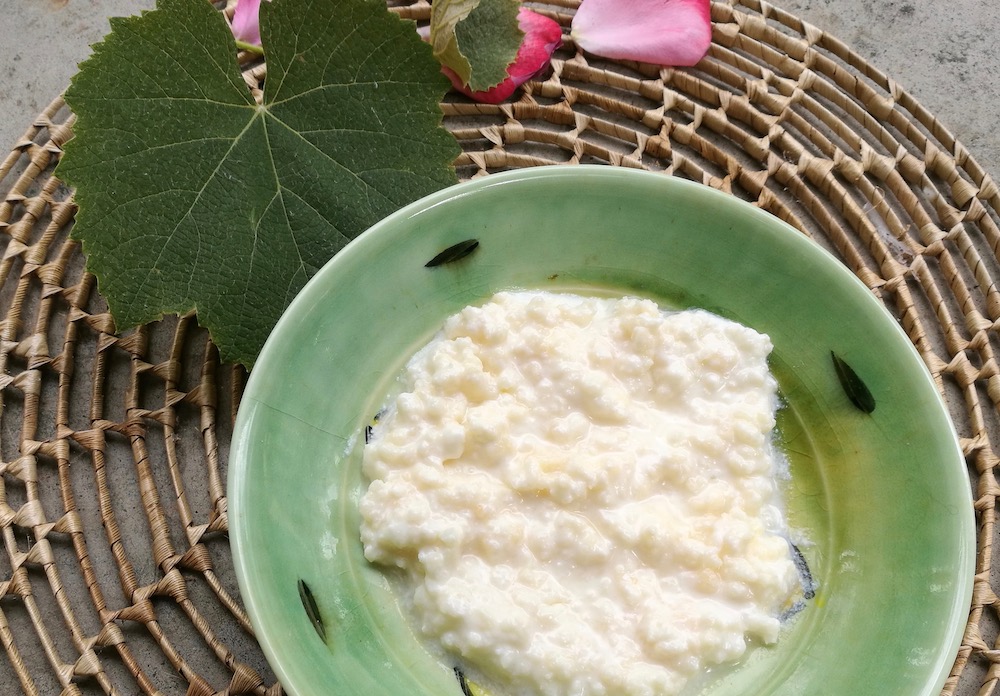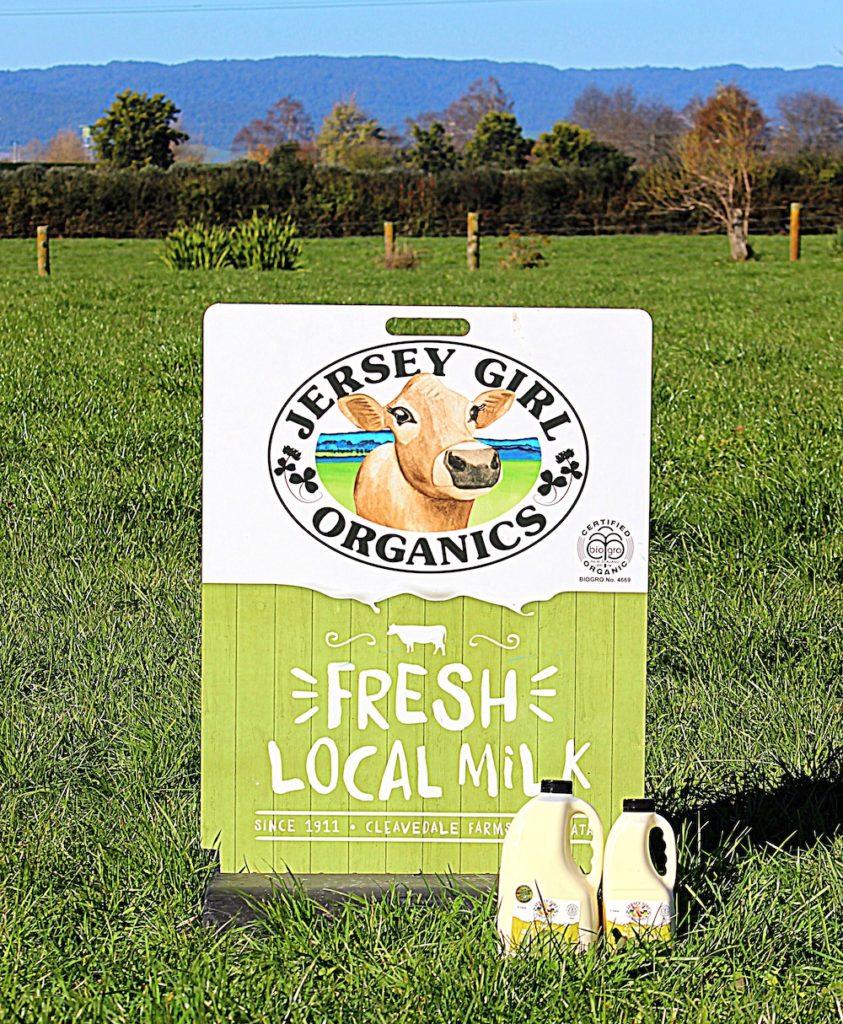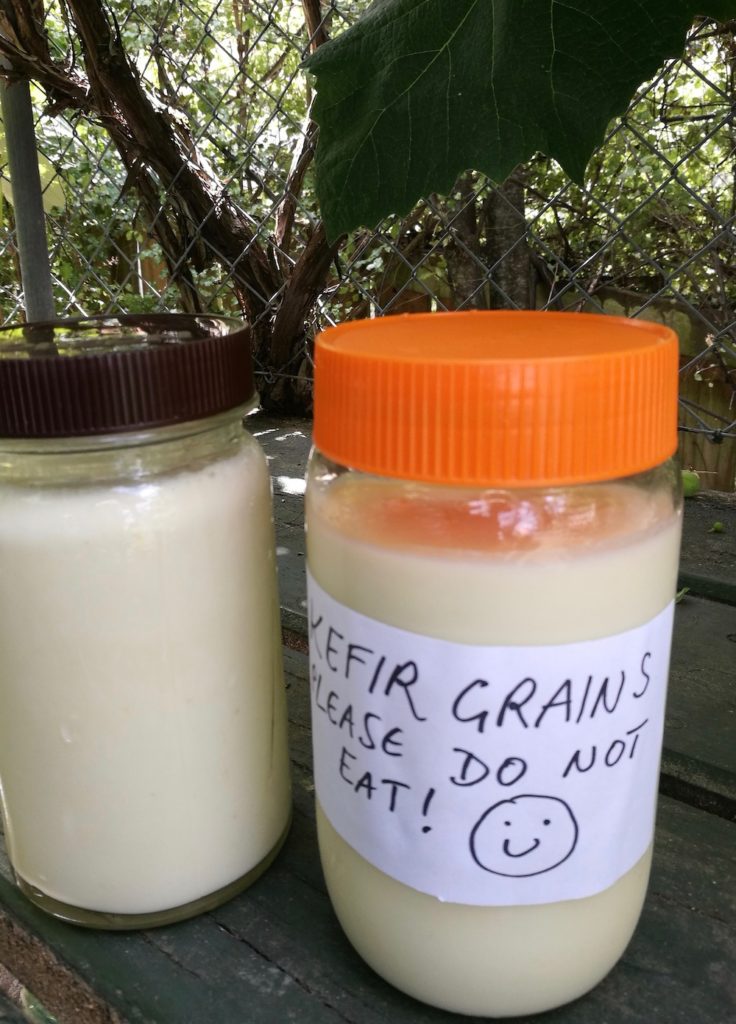My two favourite milk cultures are kefir and Caspian Sea Yoghurt.
I’m a big fan of traditionally fermented foods. I love the zing, the flavours and aromas that they add to my everyday meals.
And I also love the DIY aspect. I can make kombucha, apple cider vinegar, sauerkraut and sourdough bread at home, with everyday kitchen gear, without needing to buy specialized equipment.
I don’t do it all: my husband Matthew is currently making sourdough bread, and our son Tom is the household sauerkraut maker.
I’m the one who looks after the milk cultures. I’ve been making both kefir and Caspian Sea yoghurt regularly for about ten years.
They are the two easiest milk cultures I’ve ever found.
They’re quite different to make, and they taste quite different too. Also, they contain a different range of milk culture micro-organisms.
Fermentation and health
I love the flavour and texture of my home-made yoghurts.
Also, I enjoy the process of collaborating with household micro-organisms, all the way from sauerkraut to composting. One of my favourite books is Wild Fermentation, by Sandor Katz.
Our ancestors didn’t just develop fermentation as a traditional preservation technique. The micro-organisms in traditional fermented foods are essential for human gut health.
Some people would rather take probiotics. And yes, I’ve taken good quality commercial probiotics after a course of antibiotics.
But I find it a lot more fun and delicious and empowering to consume micro-organisms in daily food.
Traditional fermentation also renders food more digestible. Kefir and other traditional milk cultures make cow’s milk easier for many people to digest.
Bread that’s made using traditional sourdough methods is much easier on our digestive system than bread that’s made using fast-track industrial processes.
And live sauerkraut is a great improvement on raw cabbage. I love Marea Smith’s GoodBugs sauerkraut, which we can buy at the local farmers’ markets.
So what’s kefir?
Kefir isn’t strictly yoghurt. It’s actually quite weird looking.
When I first encountered kefir I had no idea what it was.
It didn’t help that I also didn’t know what it was called. My dad told me it was a “yoghurt bug”, but it wasn’t like any yoghurt bug I had ever seen.
Here’s my post about my first kefir experience. There’s a happy ending!

Kefir is pronounced two ways: “keffer” is the way most North Americans seem to say it. I’ve heard Europeans pronounce it something closer to “k’veer”.
It’s a milk culture that originally came from the Caucasus Mountains of Eastern Europe. Kefir became popular in Russia in the early 20th century.
Caspian Sea yoghurt also originates from that region. In Armenia it’s called matzoon. It’s popular in Japan, where it’s also called matsoni.
My kefir grains came from Tash Macdonald, who used to lead the local Weston A Price Foundation group. Marea Smith is the current chapter leader.
My Caspian Sea yoghurt starter came from my friend Andrea Graves, the author of a book on backyard chicken keeping called “What Your Chickens Want You To Know” (Potter and Burton, 2022).
Kefir and Caspian Sea yoghurt – the differences
Kefir is made using kefir “grains”. The so-called grains are a strange looking mass.
To me they’re more like curds – they look a bit like cottage cheese, although the texture is much firmer.
You place the kefir grains in a jar of milk, and a few days later you strain off the kefir. See later in this post for more detailed kefir instructions.
My friend Clare asked me what the grains actually are. I honestly don’t know. They are a “scoby” – this is an acronym for a Symbiotic Colony Of Bacteria and Yeasts.
But that term could also be applied to Caspian Sea yoghurt, or any other yoghurt bug, and also sourdough, sauerkraut, kombucha and even compost.
Caspian Sea yoghurt is even easier to make than kefir.
I just add two tablespoons of Caspian Sea yoghurt to a jar of milk, put the lid on and leave it on the bench. A few days later it has turned into smooth, mild yoghurt. See later in this post for more detailed instructions.
Kefir is usually a runny, pouring consistency, although depending on the milk I use, sometimes it turns out thicker. Caspian Sea yoghurt is usually a more typical soft yoghurt consistency.
Kefir is sharper, very sour in flavour, with an almost fizzy edge. Caspian Sea yoghurt tastes very mild in comparison. It’s milder in flavour than most commercial yoghurts. Whereas kefir is stronger than most commercial yoghurts.
I love them both.
Other kinds of yoghurt
Most places where animal milk is consumed by humans have traditional milk cultures. Commercially there are yoghurts made from what’s claimed to be Greek and Bulgarian strains.
Viili is a Scandinavian milk culture. I haven’t tried it yet, but I’d love to. Like Caspian Sea yoghurt, it doesn’t require the milk to be heated.
You can also make yoghurt using Easi-Yo powder, from the supermarket.
Raglan Coconut Yoghurt is superb locally made non-dairy yoghurt.
I don’t know of any other Waikato-based commercial yoghurt makers. If there are any, I’d like to hear about them.
Home-made yoghurt
I find it strange that what’s regarded as “normal” yoghurt is the most complicated to make at home, when there are other much easier and foolproof milk cultures. Like kefir and Caspian Sea yoghurt.
My mother, Sue, used to make home-made yoghurt using what I think of as the “traditional” method. It wasn’t easy to buy yoghurt in New Zealand in the early 1970s.
Sue would heat the milk almost to boiling, then cool it to blood temperature, before adding a couple of tablespoons of live yoghurt. The jar would sit in the hot water cupboard for a few days while it turned into yoghurt.
I’ve made yoghurt using this method, with a yoghurt maker to keep it warm.
But it was complicated and time consuming. And every so often a batch would go wrong, for no particular reason that I could see.
Whereas in ten years, I have had very few problems making kefir and Caspian Sea yoghurt.
Local milk producers
Both kefir and Caspian Sea yoghurt can be made using any kind of cow’s milk. Skim milk, full cream milk, homogenized, pasteurised, raw, organic, powdered, etc. They all work fine.
But, if you’re interested in food quality, nutrition, flavour – or all three, like me – then I recommend using the best milk you can.
I think I get the best result with both kefir grains and Caspian Sea yoghurt, with better quality milk.
Supporting the local food economy, environmental sustainability and animal welfare issues are other considerations for me.
We’re lucky in the Waikato, that we have some great local milk suppliers to choose from.
Here are two excellent milk suppliers that I use regularly.
They are small-scale producers by the standards of the huge New Zealand dairy industry.
Matamata-based Jersey Girl Organics produce certified organic, A2 full-cream milk. They sell their milk at the Waikato farmers’ markets, and also through selected local retailers and supermarkets.

Dreamview Creamery, near Raglan, produce both raw and pasteurized milk in glass bottles. (Although they don’t have organic certification.)
Dreamview Creamery milk is available at selected retailers, including my local Hamilton East Bin Inn and Silverdale Four Square. They also offer home deliveries.

Getting started with kefir
The best way to get kefir grains is from a friend. Or from the local chapter of the Weston A Price Foundation. Here’s a link to the Waikato group’s Facebook page.
If you go to one of their meetings there will almost certainly be spare kefir grains available for a small donation.
The local Waikato Time Bank often has people offering kefir grains.
I’ve seen kefir grains for sale on line. But the big advantage of getting kefir grains from someone you know is that they’ll have plenty of advice to share.
It’s much easier to learn about kefir by watching someone else, and asking questions.
How to make kefir
You need:
Kefir grains
Two 1 litre jars with plastic lids. Metal lids aren’t ideal because they may corrode.
A kitchen sieve, to strain the kefir liquid from the grains.
Some people recommend using non-metallic sieves. But I use a metal sieve and it works fine.
Method
Place 2 or 3 tablespoons of kefir grains in a 1 litre jar.
NB 2 tablespoons of grains is the minimum quantity. More is better, up to about half a cup of grains. Any more than that and there won’t be room for the milk in the jar.
Fill the jar with cow’s milk, leaving a small space at the top.
Screw lid on the jar. NB screw the lid on fully. Kefir doesn’t seem to need air.
Leave jar on the bench for two or three days, until the milk has thickened a bit. In cold weather this will take longer, maybe four or five days.
It will be a runny consistency, not like ordinary yoghurt.
If you leave your kefir a bit longer than ideal, it may separate into curds and whey. That’s okay. Just stir gently to recombine, after you’ve strained the liquid. Or, you could strain off the whey for a thicker product.
The longer you leave the grains, the stronger the sour kefir flavour.

The next step is to strain the kefir liquid out of the grains.
How to strain kefir grains
Place sieve over a bowl.
Tip the jar of kefir and grains into the sieve.
Stir gently to strain the liquid without squashing the grains.
The grains will still have some liquid on them, and that’s fine.
To make a new batch of kefir, place the grains in a clean jar of milk.
Some people suggest rinsing the grains after straining off the kefir, but I have never done this.
Pour the kefir liquid into a clean jar.
Store the kefir in the fridge. It will keep for weeks, but I hope you’ll use it before then.
Care of kefir grains
Kefir grains will multiply as you use them. At some times of year they seem to grow faster.
When you have more than half a cup of grains, store the extra grains in a jar of milk in the fridge, labelled with the date. I think kefir grains can be also stored in the freezer, but I’ve never tried it.
Every couple of months I check the spare kefir jar, drain off the milk and feed it fresh milk. (Or throw it out if it looks gross.)
When the grains have been sitting in the fridge for a few months they will take a few days to revive at room temperature.
Give away your spare kefir grains. Keep one backup supply for yourself, in case something awful happens to the main kefir jar. Like, being eaten accidentally by husband (it’s happened), or being left for a week on the windowsill in summer (the grains died).
“I’ve killed my kefir!”
You can kill kefir grains, if you leave them at room temperature and don’t feed them for a couple of weeks. This happens faster in hot weather.
I’ve managed to kill my kefir grains just once in ten years. It was a hot summer. I left the jar out on the bench for a week. When I went to strain off the grains they had disappeared. And I’d just given away my backup supply to a friend.
I had to ask for half the grains back!
Kefir lasts a long time in cold temperatures. (See the section on care of kefir grains.) When you’re going on holiday, leave the kefir jar in the fridge. Labelled, so your house sitter doesn’t eat it by mistake.
Don’t feel guilty if you kill your kefir grains. Just get some more and start over.
Sour cream kefir
Kefir grains make superb sour cream.
Simply place the grains in cream instead of milk. Leave the jar until the cream has soured. It won’t take long – probably just a couple of days. The longer you leave it, the stronger the flavour will be.
Strain off the sour cream and return the grains to a fresh jar of milk.
You can also make cheese using kefir and cream. But I haven’t tried this.
Kefir with other liquids
Kefir can be made using goat milk, nut milk etc. The milk kefir grains won’t multiply in non-dairy milk, and the micro-organisms won’t stay healthy long-term.
If you’re using non-dairy milk you’ll need to make a batch using cow’s milk every so often. Or, just plan to replace your kefir grains every few weeks.
I’ve also used milk kefir grains to make soda pops and other fizzy non-alcoholic beverages. The milk kefir grains need to be rinsed thoroughly in cold water before being placed in a jar of water mixed with sugar and flavourings.
The kefir grains won’t stay healthy for more than one or two batches of soda pop, and they won’t multiply.
Water kefir
You can also get special “water kefir” grains that thrive on sugar-water, and don’t need cow’s milk to stay alive. These ones might work better with non-dairy milks, but I haven’t tried this.
A good place to find water kefir grains is at a local Weston A Price Foundation meeting.
How to make Caspian Sea yoghurt
Compared with kefir, this is super-easy.
Place 2 tablespoons of Caspian Sea yoghurt in a 1 litre jar.
Fill the jar with milk.
Any kind of cow’s milk is okay. Straight from the fridge is fine.
I think it works best with full-cream, non-homogenised milk, e.g. Jersey Girls. But maybe that’s my subjectivity.
Screw a lid on the jar. You can screw the lid on tight. Caspian Sea yoghurt doesn’t seem to need air.
Leave jar on the bench for two or three days, until it has thickened into yoghurt. Keep checking every day.
If you leave your Caspian Sea yogurt culture a bit longer than ideal, it may separate into curds and whey. That’s okay. Just stir gently to recombine.
Store the yoghurt in the fridge.
Keep a small amount of yoghurt in reserve to make the next batch.


